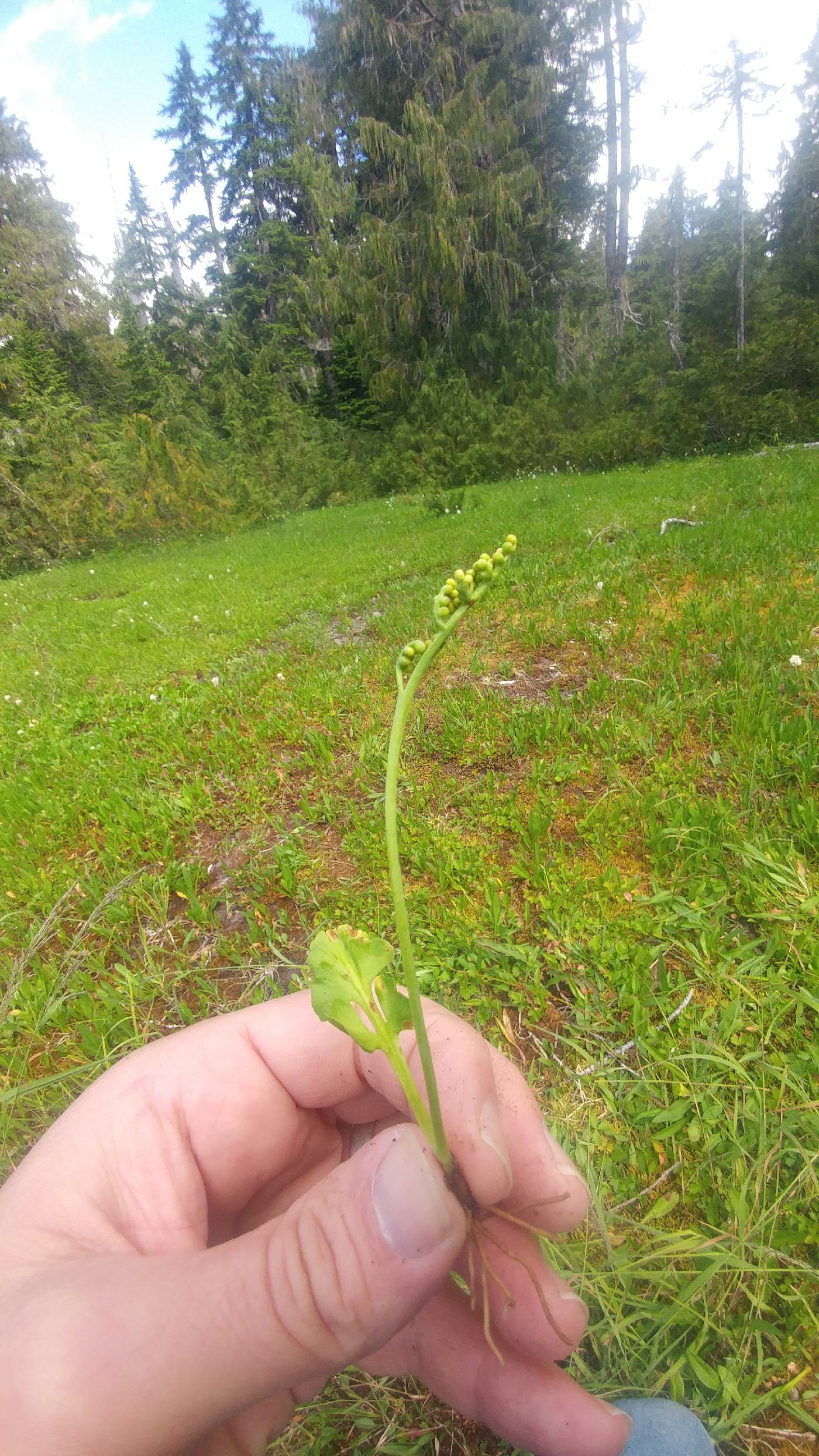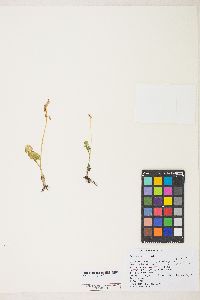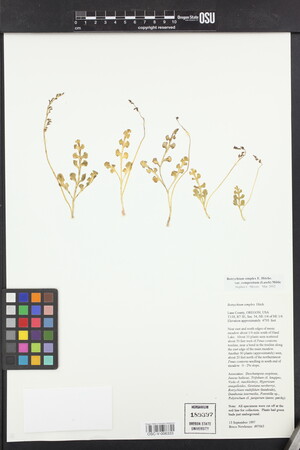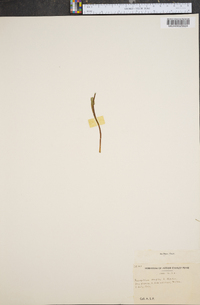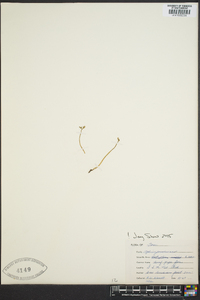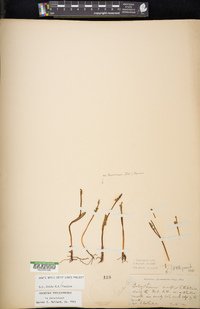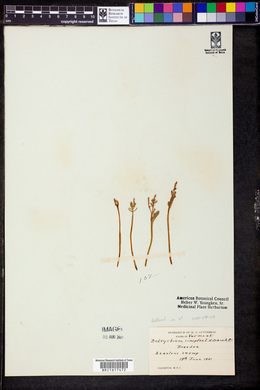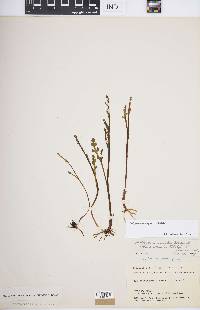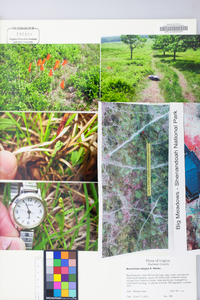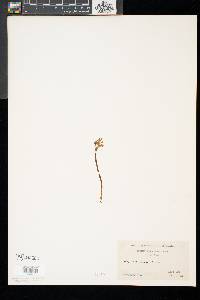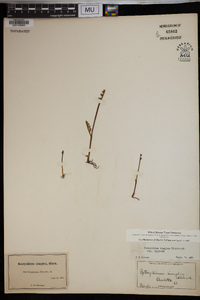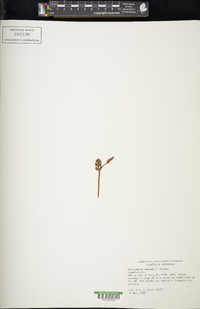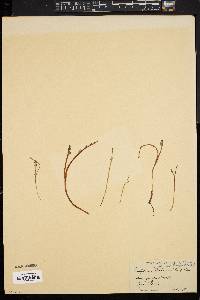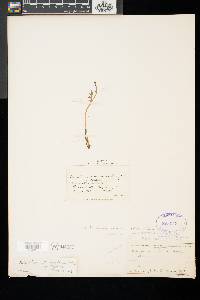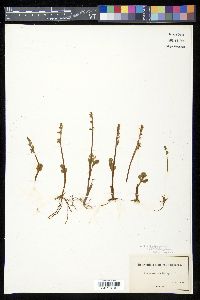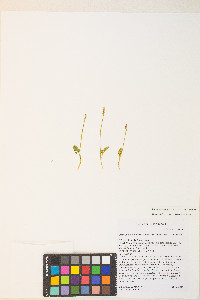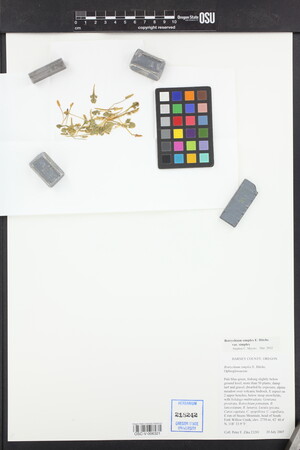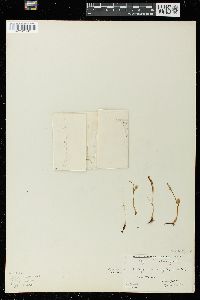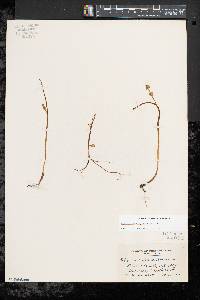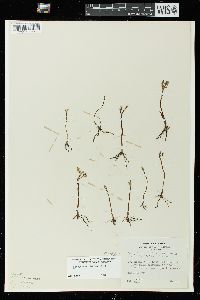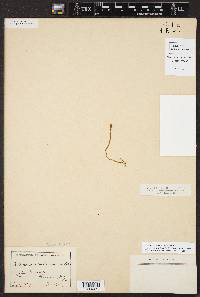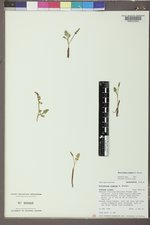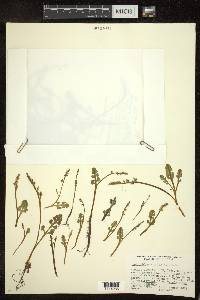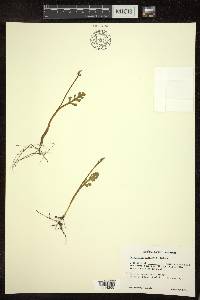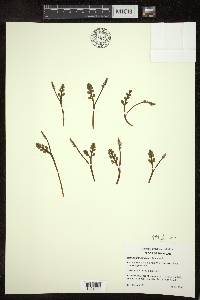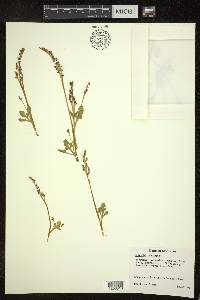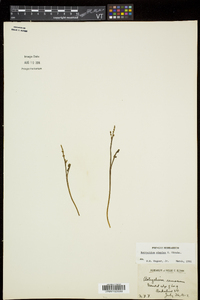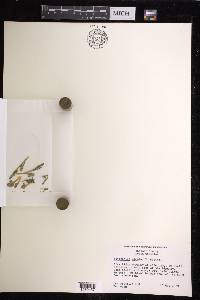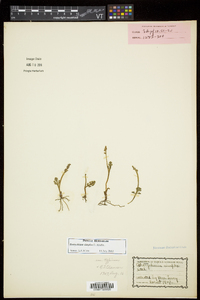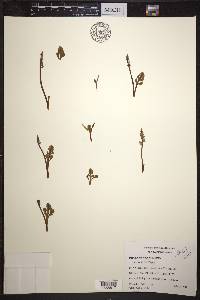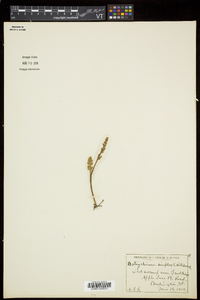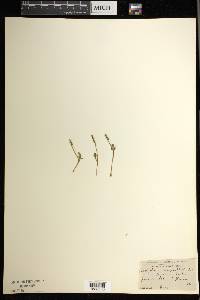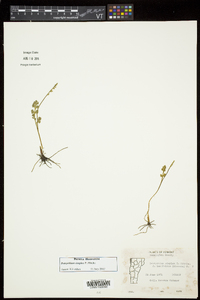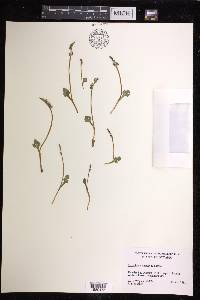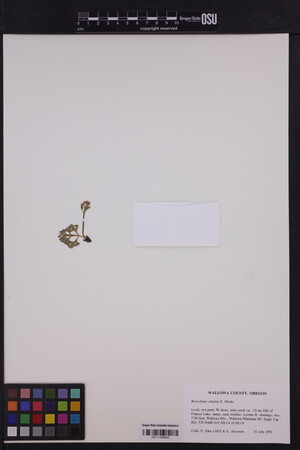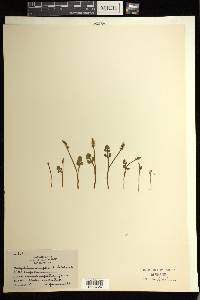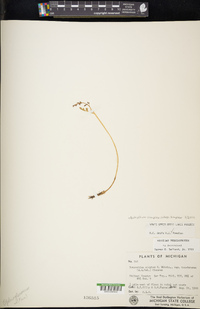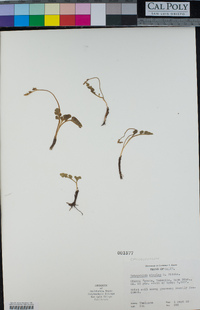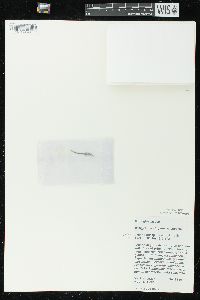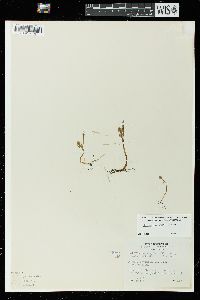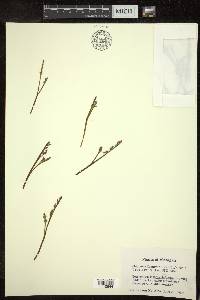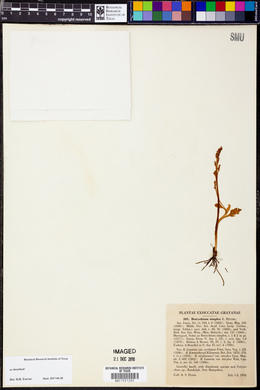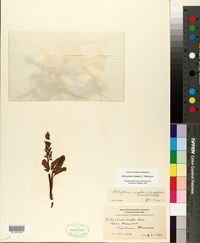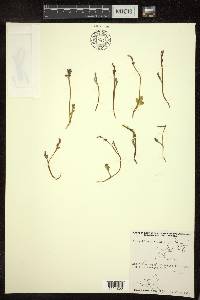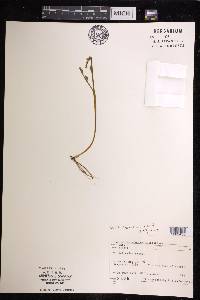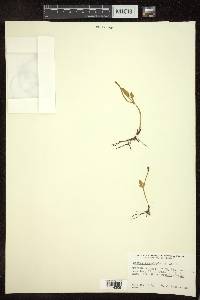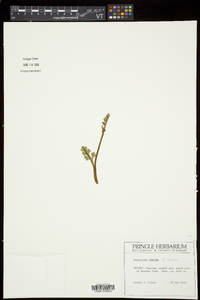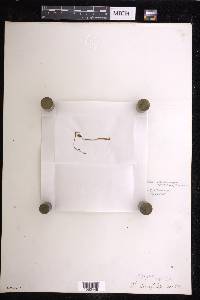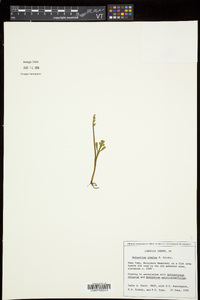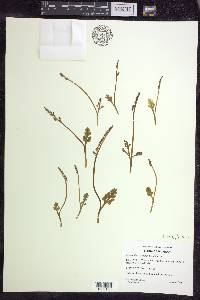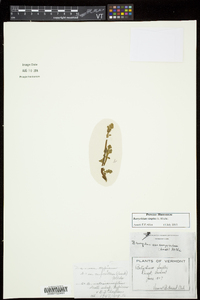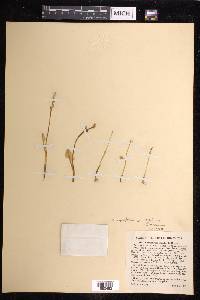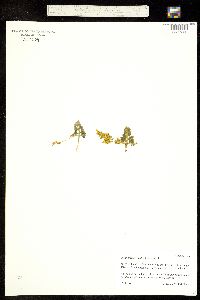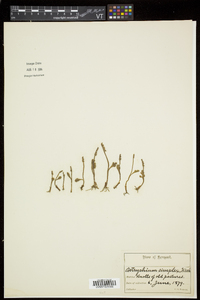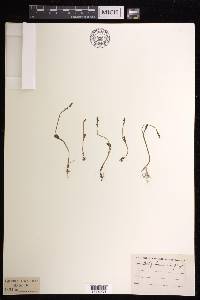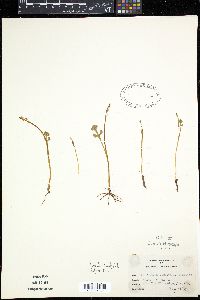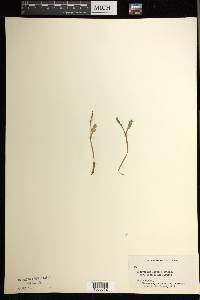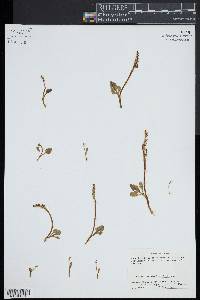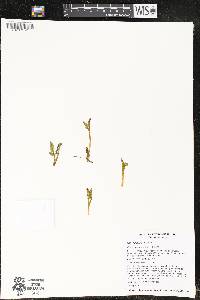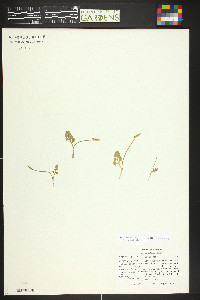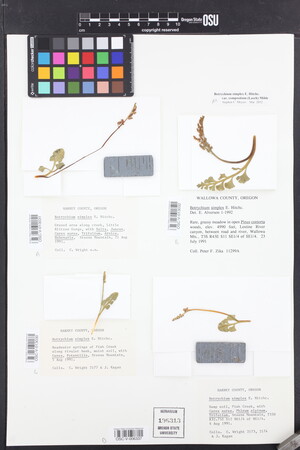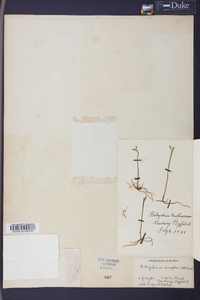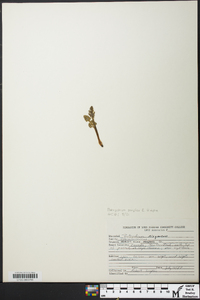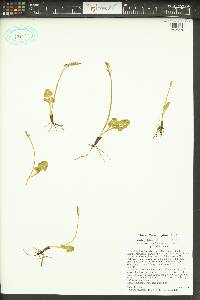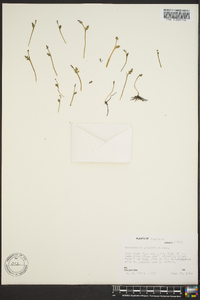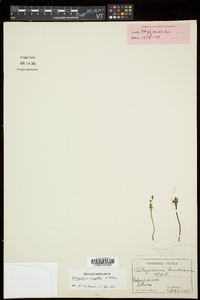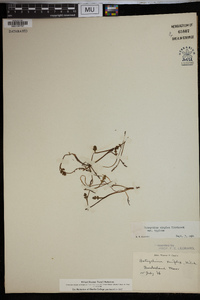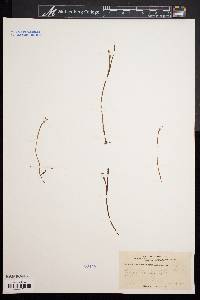
|
|
|
|
Family: Ophioglossaceae
Least Moonwort
|
Trophophore stalk 0--3 cm, 0--1.5 times length of trophophore rachis; blade dull to bright green to whitish green, linear to ovate-oblong to oblong to fully triangular with pinnae arranged ternately, simple to 2(--3)-pinnate, to 7 × 0.2 cm, fleshy to thin, papery or herbaceous. Pinnae or well-developed lobes to 7 pairs, spreading to ascending, approximate to widely separated, distance between 1st and 2d pinnae frequently greater than between 2d and 3d pairs, basal pinna pair commonly much larger and more complex than adjacent pair, cuneate to fan-shaped, strongly asymmetric, undivided to divided to tip, basiscopic margins ± perpendicular to rachis, acroscopic margins strongly ascending, basal pinnae often divided into 2 unequal parts, margins usually entire or shallowly sinuate, apex rounded, undivided and boat-shaped to strongly divided and plane, venation pinnate or like ribs of fan, with midrib. Sporophores mainly 1-pinnate, 1--8 times length of trophophores. 2 n =90. Leaves appearing midspring to early fall. Dry fields, marshes, bogs, swamps, roadside ditches; 0--2200 m; Greenland; Alta., B.C., N.B., Nfld., N.S., Ont., Que., Sask.; Calif., Colo., Conn., Del., D.C., Idaho, Ill., Ind., Iowa, Maine, Md., Mass., Mich., Minn., Mont., Nev., N.H., N.J., N.Y., N.C., Ohio, Oreg., Pa., R.I., Utah, Vt., Va., Wash., W.Va., Wis., Wyo.; Europe. The many environmental forms and juvenile stages of Botrychium simplex have resulted in the naming of numerous, mostly taxonomically worthless, infraspecific taxa. The western montane populations in the flora from Colorado to north Saskatchewan and westard are evidently distinctive, however, and may warrant subspecies or species status. Mature, full-sized plants of these can be distinguished as follows: Eastern Botrychium simplex : Sporophore 1--4 times length of trophophores, arising from well-developed common stalk from below middle to near top, well above leaf sheath; trophophore nonternate or if subternate, lateral pinnae smaller than central pinnae and simple to merely lobed (rarely pinnate); pinnae usually adnate to rachis, rounded and ovate to spatulate, segment sides at angles mostly less than 90°; trophophore tip undivided; texture papery to herbaceous; common in upland fields. Western Botrychium simplex : Sporophore 3--8 times length of trophophore, mostly arising directly from top of leaf sheath, common stalk much reduced to absent; trophophore ternate with 3 equal segments (rarely nonternate, then resembling single segment of ternate blade); pinnae usually strongly contracted at base to stalked, angular to fan-shaped, segment sides at angles mostly more than 90°, like those of B . lunaria ; trophophore tip divided, usually in 3 parts including narrow central lobe; texture thin, herbaceous; habitats mainly along marshy margins and in meadows. The eastern, typical Botrychium simplex has a common woodland and swamp shade form ( B . tenebrosum A.A. Eaton) that appears to be a persistent juvenile. It is small and extremely slender, the trophophore simple, rudimentary, and attached near the top of an exaggerated common stalk. Many intermediates between this and more typical forms exist, however, and the variation appears to be the result of different growing conditions. The persistent western juvenile counterpart differs in the generally lower attachment of the trophophore (not necessarily on the top of the sheath), greater length of the trophophore, and more herbaceous texture.
Perennial fern 3 - 16 cm tall Stem: single, upright, very short and inconspicuous, up to 5 mm in diameter with a thickened base (caudex). Spores: thousands per sac, all of one kind, three-sectioned (trilete), thick-walled, and with a bumpy or pimply surface. The spores give rise to the gametophyte (the sexual phase of the plant), which is broadly egg-shaped, unbranched, tiny (1 - 3 mm tall, 1 - 10 mm diameter), fleshy, not green, underground, saprophytic, and inhabited by symbiotic fungi (mycorrhizae). Leaf: one per stem, on stalk arising from an expanded, clasping base, which forms a closed sheath around stem apex. The single leaf is made up of two parts arising from a shared stalk: a sterile, green, expanded blade portion (trophophore); and a fertile, stalk-like, spore-bearing portion (sporophore). Leaves appear in mid-spring to early fall. Roots: up to ten per plant, yellow or brown, 0.5 - 1.5 mm in diameter, and originating 1 cm below the base of the plant. Similar species: Botrychium simplex is most similar to B. campestre, but the sterile blade (trophophore) of that species is very fleshy, usually folded lengthwise when alive, and the main sections (pinnae) are more linear. Also similar is B. matricariifolium, but that species has more oblong-triangular to egg-shaped trophophores with more lance-shaped pinnae having long, pointed tips. All of our other species have trophophore blades that are widely triangular, wider than long, and pinnately compound multiple times. Habitat and ecology: Incredibly rare, from prairies to more moist sites. Occurence in the Chicago region: native Notes: This species if highly variable in terms of appearance due to differences in environmental conditions, plus the prominence of immature, juvenile forms can further add to variation. In North America, there is even a woodland and swamp shade form that appears to be in a persistent juvenile stage. Author: The Field Museum Plants 3-16 cm, wholly glabrous; blade and sporophore ±erect in bud; blade supramedial or more often inframedial, on a 5-20 mm stalk, mostly 1-2(-4) נ0.5-1.5(-3) cm, often not reaching the base of the sporophore, simple or more often with (1)2-3(4) pairs of subopposite pinnae, these mostly obovate, basally cuneate, rounded above, entire or sometimes lobulate or the basal ones even somewhat pinnatifid, the basal pair larger than the next pair above at least in well developed plants; upper pinnae tending to be confluent; 2n=90. Open, marshy places, meadows, and edges of woodland ponds; circumboreal, s. to N.H., Pa., Io., and Calif. May, June. Ours is var. simplex. Gleason, Henry A. & Cronquist, Arthur J. 1991. Manual of vascular plants of northeastern United States and adjacent Canada. lxxv + 910 pp. ©The New York Botanical Garden. All rights reserved. Used by permission. From Flora of the Indiana Dunes (1930) - Donald C. Peattie B. simplex E. Hitchcock was found by Clute at South Gary, but the station appears to be destroyed. From Flora of Indiana (1940) by Charles C. Deam I have seen specimens from three collections. The first was collected in 1910 by W. N. Clute along the Michigan Central Railroad near Glen Park, Lake County. A second specimen was collected in 1929 by Marcus W. Lyon, Jr., on the wooded border of an interdunal flat in Porter County. R. T. Clausen has seen this specimen and confirms the identification. The third was collected by J. A. Nieuwland at Dune Park, Porter County. ...... Indiana Coefficient of Conservatism: C = 6 Wetland Indicator Status: FAC |

